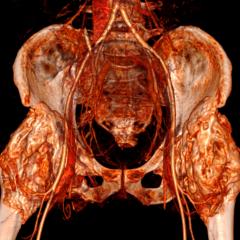Families with a high prevalence of breast cancer may soon know more about why they are at a greater risk of developing the disease.
Researchers at The University of Queensland used a test called whole genome sequencing to understand more about the hereditary link to a patient developing breast cancer.
UQ Centre for Clinical Research scientist Dr Peter Simpson said the test enabled the most comprehensive investigation of both the normal genome (the DNA from a blood sample) and the breast cancer genome (the DNA from the cancer).
“The data we get from this whole genome sequencing test tells us a detailed story of how the cancer might have occurred, and at the same time can identify possible treatment options for the patient,” Dr Simpson said.
BRCA1 and BRCA2 genes are widely known as carrying the specific inherited mutations that increase the risk of female breast and ovarian cancer by up to 60 per cent.
“We know that if you inherit a mutated version of one of these genes then you have an increased risk of developing breast cancer,” he said.
“These genes play an important role in protecting us from cancer because they help to repair certain types of damage to our DNA.
“Interestingly, if we lose this protective function provided by BRCA1 or BRCA2, then a cancer that develops has a very specific pattern of DNA damage in it.
“We call this DNA damage a mutation signature, and it can be identified through this type of sequencing test.
“The other important part of this story is that when we identify this pattern of DNA damage in the cancer it might suggest the patient will respond well to certain types of chemotherapy or a type of targeted therapy called PARP inhibitors.”
Dr Simpson and colleagues were the first to perform this type of modern sequencing on breast cancers from patients who have an inherited risk to developing the disease, but which is not caused by BRCA1 or BRCA2.
“BRCA1 and BRCA2 are important genes regarding cancer risk, but they are not the only ones and for many families the genetic cause of their disease is unknown.” Dr Simpson said.
“So, we wanted to use this genome sequencing to understand more about inherited breast cancer not caused by these mutations.
“The mutation signature we identified in some of the cancers provided us with the evidence to find the faulty gene that the patient had inherited.
“Importantly, sometimes the mutation signature looked just like that which we see in cancers caused by the loss of BRCA1 or BRCA2, suggesting these patients might respond well to the same therapies.”
The research team believe that by performing contemporary sequencing on the normal DNA and on the cancer DNA from a cancer patient may become clinically useful.
Not only could it help identify the genetic cause of an individual’s cancer, but it could also help find useful therapeutic options for the patient.
“We are exploring this further with a Queensland Health funded Queensland Genomics program where we will perform whole genome sequencing on a series of Brisbane patients at the time of diagnosis,” Dr Simpson said.
The research is published in Annals of Oncology (DOI:10.1093/annonc/mdz132), with an expert commentary on the study also published in Annals of Oncology.
This was an international collaborative study, principally involving UQ (UQCCR and IMB) and QIMR Berghofer Medical Research Institute.
The samples analysed were obtained from patients who donated their samples to medical research, via three tissue banks: The Kathleen Cuningham Foundation Consortium for Research into Familial Aspects of Breast Cancer (kConFab), The Australian Breast Cancer Tissue Bank (ABCTB), and The Brisbane Breast Bank (BBB). The project was funded by the National Health and Medical Research Council.
Media: Dr Peter Simpson, p.simpson@uq.edu.au; Faculty of Medicine Communications, med.media@uq.edu.au, +61 7 3365 5118, +61 436 368 746.
Find out more information on breast cancer genetics.



